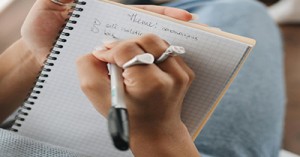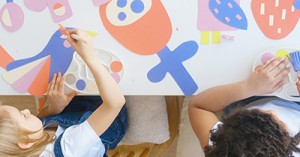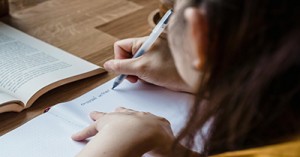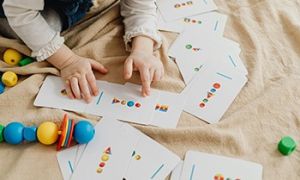Q: A strengths-based approach focuses on what children can do, rather than what they lack. It celebrates each child’s capabilities, interests, and efforts and uses these as the foundation for learning and development.
Key Principles
- Individuality is valued: Every child is seen as unique, with their own pace, style, and pathway of growth.
- Progress is personal: Instead of comparing children to a standard benchmark or each other, educators observe and document how each child is evolving in their own meaningful way.
- Language uplifts: Observations are framed using positive, affirming language that highlights strengths, curiosity, resilience, and creativity.
- Documentation is respectful: Records reflect the child’s voice, choices, and emotional world — not just their outcomes.
Strengths-Based Language in Practice: Expanded Examples
Instead of saying:
-
“Noah avoids messy play and refuses to touch sensory materials.”
Try:
“Noah shows a preference for clean, structured activities and is gradually exploring sensory materials with tools and gentle guidance.”
Instead of saying:
- “Maya doesn’t follow instructions and often disrupts group time.”
Try:
“Maya expresses her ideas freely and responds well to choices and visual cues during group routines.”
Instead of saying:
- “Eli has poor fine motor skills and can’t use scissors properly.”
Try:
“Eli is developing hand strength and enjoys using tongs and playdough tools to build coordination.”
Instead of saying:
- “Zara isolates herself and doesn’t talk to other children.”
Try:
“Zara engages deeply in independent play and is beginning to build confidence in small social interactions.”
Instead of saying:
- “Leo doesn’t sit still and struggles to concentrate.”
Try:
“Leo thrives in movement-based learning and shows curiosity through active exploration and hands-on engagement.”
Instead of saying:
- “Amira doesn’t complete tasks and gives up easily.”
Try:
“Amira is learning to persist through challenges and responds positively to encouragement and scaffolded support.”
Instead of saying:
- “Jasper is defiant and refuses to follow rules.”
Try:
“Jasper advocates for his preferences and is learning to navigate boundaries with adult support and clear expectations.”
Instead of saying:
- “Talia is behind in her speech and doesn’t communicate clearly.”
Try:
“Talia uses gestures, facial expressions, and emerging words to share her needs and connect with others.”
Why It Matters
- It fosters self-esteem and agency in children.
- It builds trust between educators, children, and families.
- It supports inclusive practice, especially for neurodiverse children or those with trauma backgrounds.
- It aligns with trauma-informed and emotionally intelligent pedagogy, something you champion so powerfully.
Every word we choose, every observation we document, and every story we tell about a child shapes their sense of self. When we speak with kindness, curiosity, and respect, we do more than record—we restore.
A strengths-based approach isn’t just a pedagogical choice. It’s a commitment to seeing children as capable, complex, and worthy. It’s a promise to families that their children will be known, not measured. And it’s a gift to ourselves as educators: the joy of witnessing growth through a lens of hope.
Further Reading
Observations in Childcare
Different Types Of Observation Methods
Writing Observations For Babies
Q: What Is A Narrative Observation







 Here is the list of the EYLF Learning Outcomes that you can use as a guide or reference for your documentation and planning. The EYLF
Here is the list of the EYLF Learning Outcomes that you can use as a guide or reference for your documentation and planning. The EYLF The EYLF is a guide which consists of Principles, Practices and 5 main Learning Outcomes along with each of their sub outcomes, based on identity,
The EYLF is a guide which consists of Principles, Practices and 5 main Learning Outcomes along with each of their sub outcomes, based on identity, This is a guide on How to Write a Learning Story. It provides information on What Is A Learning Story, Writing A Learning Story, Sample
This is a guide on How to Write a Learning Story. It provides information on What Is A Learning Story, Writing A Learning Story, Sample One of the most important types of documentation methods that educators needs to be familiar with are “observations”. Observations are crucial for all early childhood
One of the most important types of documentation methods that educators needs to be familiar with are “observations”. Observations are crucial for all early childhood To support children achieve learning outcomes from the EYLF Framework, the following list gives educators examples of how to promote children's learning in each individual
To support children achieve learning outcomes from the EYLF Framework, the following list gives educators examples of how to promote children's learning in each individual Reflective practice is learning from everyday situations and issues and concerns that arise which form part of our daily routine while working in an early
Reflective practice is learning from everyday situations and issues and concerns that arise which form part of our daily routine while working in an early Within Australia, Programming and Planning is reflected and supported by the Early Years Learning Framework. Educators within early childhood settings, use the EYLF to guide
Within Australia, Programming and Planning is reflected and supported by the Early Years Learning Framework. Educators within early childhood settings, use the EYLF to guide When observing children, it's important that we use a range of different observation methods from running records, learning stories to photographs and work samples. Using
When observing children, it's important that we use a range of different observation methods from running records, learning stories to photographs and work samples. Using This is a guide for educators on what to observe under each sub learning outcome from the EYLF Framework, when a child is engaged in
This is a guide for educators on what to observe under each sub learning outcome from the EYLF Framework, when a child is engaged in The Early Years Learning Framework describes the curriculum as “all the interactions, experiences, activities, routines and events, planned and unplanned, that occur in an environment
The Early Years Learning Framework describes the curriculum as “all the interactions, experiences, activities, routines and events, planned and unplanned, that occur in an environment


